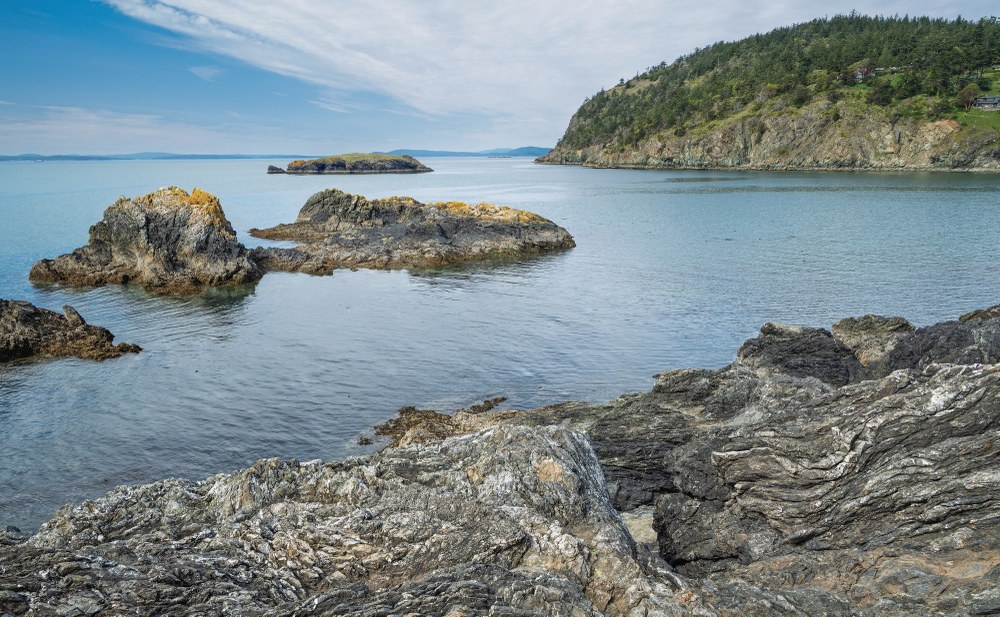
The folded rock feels like sandpaper. My index finger traces the miniature ridges, trying to sense the organisms that formed them. Some hundred and fifty million years ago, billions of Radiolaria skeletons floated to the ocean floor. The pressure from the ocean’s depth compressed and crunched the skeletons into a ribbon chert (a form of sedimentary rock). Then the chert moved, through continental drift, from Baja California to northern Washington, where the ocean crust uplifted and folded to form the landscape where I’ve come today: Rosario Head.
In the past three months, I’ve visited Rosario Head in Deception Pass State Park five times… just to sit on these ancient skeletons. Why do I keep returning?
The gift of getting to know a place
For friend and award-winning natural history author David B. Williams, connecting to place involves uncovering the mysteries of our landscapes and what draws us to them. In his new Mountaineers Books title, Wild in Seattle: Stories at the Crossroads of People and Nature, Williams shares a collection of essays that explore the interconnectedness of Seattle’s natural, urban, and geological wonders. His words inspire me to look deeper at the environment around me and reflect on my place within it.
Sitting in the familiarity of Rosario Head, I am reminded of Williams’ stories as a park ranger, which on occasion included encountering hikers who were eager for trail recommendations but hesitant to revisit trails they’d already hiked. But there is so much we can learn, come to expect, and ponder by wandering the same places, Williams encourages.
Mountaineers friends often ask me if I plan to lead this or that hike again. Like me, they enjoy wandering the same places, and know well how a place feels like a friend the more you visit.
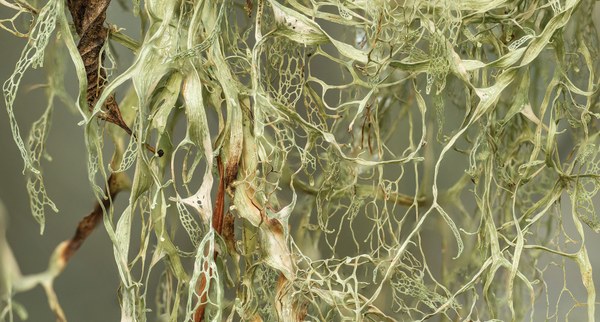 Fishnet lichen (Ramalina menziesii) hangs from trees in long strands that intertwine.
Fishnet lichen (Ramalina menziesii) hangs from trees in long strands that intertwine.
Uncovering geology’s layered stories
My second visit to Rosario Head was a Mountaineers trip I led in January. The mosses and lichens were extraordinary – vibrant and alive. Pelegra, Parmelia, and Dicranum blanketed the rocks while fishnet lichens dangled from trees in long, cross-thatched strands.
My co-leader, Stewart, explained to the group how the area’s geology illuminates the formation of Washington. When dinosaurs evolved, the west coast of North America was near where Spokane is now. Multiple accretions of oceanic plates widened the continent, and uplifting (the raising of the Earth’s crust through tectonic forces) shaped the state.
Since hearing Stewart’s insights, I’ve read more about Deception Pass. I’m still trying to comprehend its geology. Dr. Juliet Crider of the University of Washington says the ocean floor – basalt, chert, argillite – folded over on itself as it moved and uplifted, creating these patterns. The ribbon chert is obvious as I push off it with my hand to stand. Higher on the cliff is a layer of oceanic basalt. And these darker rocks at my knees might be argillite beds (which have apparently undergone slight metamorphism from the pressure and heat during their journey). With each visit, I feel I come closer to deciphering these layers.
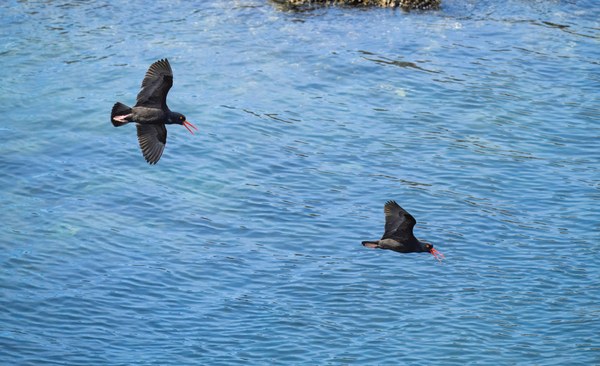 A pair of black oystercatchers fly around Rosario Head and call loudly.
A pair of black oystercatchers fly around Rosario Head and call loudly.
Listening to what the land teaches
Williams’ words “knowledge threads” and “connections” come to mind. Sometimes, in unexpected places, these pieces fuse.
On a recent field trip I led with The Mountaineers, we hiked to Summerland, which boasts spectacular subalpine meadows in July and August. To get to Summerland, one travels up the Fryingpan Creek Trail, whose bottom third section passes through an old-growth forest of western hemlocks and Pacific silver firs. Most people (myself included) hot-foot it through the trees to reach views at higher elevations. But the stories in that forest are amazing.
In Wild in Seattle, Williams discusses how volcanic mudflows called lahars deposited sediment along the Duwamish River. I knew about the devastation of the Osceola Mud Flow (which buried a large portion of the Puget Sound lowland around 5,600 years ago), but Williams mentions that another lahar, known as the Fryingpan Creek Flow, had approached Puget Sound.
“Be aware. Pay attention. Slow down,” Williams reminds.
Meandering through Fryingpan Creek Trail, I took my time and encouraged my students to do the same. In the forest, I challenged the group to search for Douglas firs (which are sparse along this trail) and note the age distribution. The few we found were gigantic, two to three feet in diameter. This species – which can live for a thousand years – is shade-intolerant, so these individuals must have germinated when there wasn’t a dense old-growth forest. I speculated what might have disturbed the forest and given these monarchs a chance to gain a foothold: maybe landslides or a fire. But I hadn’t considered a lahar. Since reading Williams’s mention of the Fryingpan Creek Flow, I’ve tracked down several geology papers to help fill the gaps. The Fryingpan Creek Lahar occurred about eleven hundred years ago and might have been the disturbance.
“No matter where these paths lead me, I feel I am rewarded by the knowledge I gain,” Williams says.
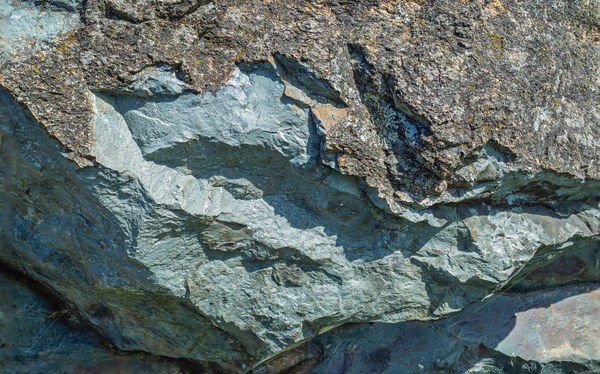 Greywacke is a poorly sorted coarse-grained sandstone.
Greywacke is a poorly sorted coarse-grained sandstone.
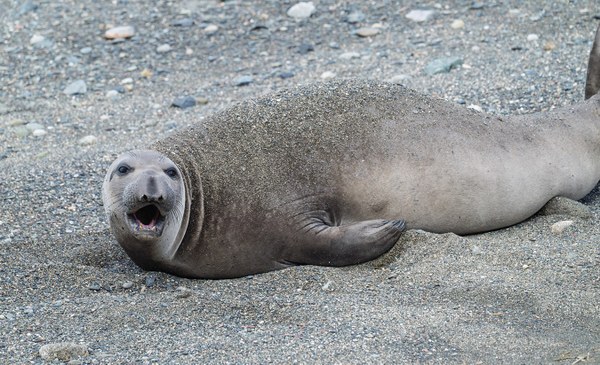 A female elephant seal pulls out on the beach by Rosario Head where she will molt before heading back to the ocean.
A female elephant seal pulls out on the beach by Rosario Head where she will molt before heading back to the ocean.
Finding home in a shifting landscape
High-pitched, rolling notes alert me to black oystercatchers. I smile. White-crowned sparrows are here too, courting. Rosario Head rises another 30 to 40 feet above my perch. The top is flat, the size of a city block. In the middle lies a rock, greywacke, almost as big as a Prius, left by the last Pleistocene glacier. Like the chert, Rosario Head is now the greywacke’s home.
I feel the touch of earth beneath my feet that once lined the ocean off Baja California. Home is always moving, as are the organisms within it. When I moved to the Pacific Northwest, I always thought I’d move back east after my job ended. But here I stay, returning to the same places.
Williams writes that becoming established in a new place means learning what binds the organisms and land together. As I uncover the landscape’s history, I become entangled in its story. Is this why I keep returning to Rosario Head?
I hear a loud belch reverberate through the park. A harbor seal, I think – but no, it’s an elephant seal. This individual (#1285) pulled out of the water to go through her molt. I learn that she was born on Whidbey Island in 2018, the second pup to a female who established a new colony. Puget Sound is a recent expansion for this species.
I watch the seal, who looks at home in her species’ relatively new surroundings, and muse, “These lands nourish me, too.”
Wild in Seattle: Stories at the Crossroads of People and Nature is available for purchase at our Seattle Program Center Bookstore, online at mountaineersbooks.org, and everywhere books are sold.
This article originally appeared in our summer 2025 issue of Mountaineer magazine. To view the original article in magazine form and read more stories from our publication, visit our magazine archive.
 Thomas Bancroft
Thomas Bancroft
